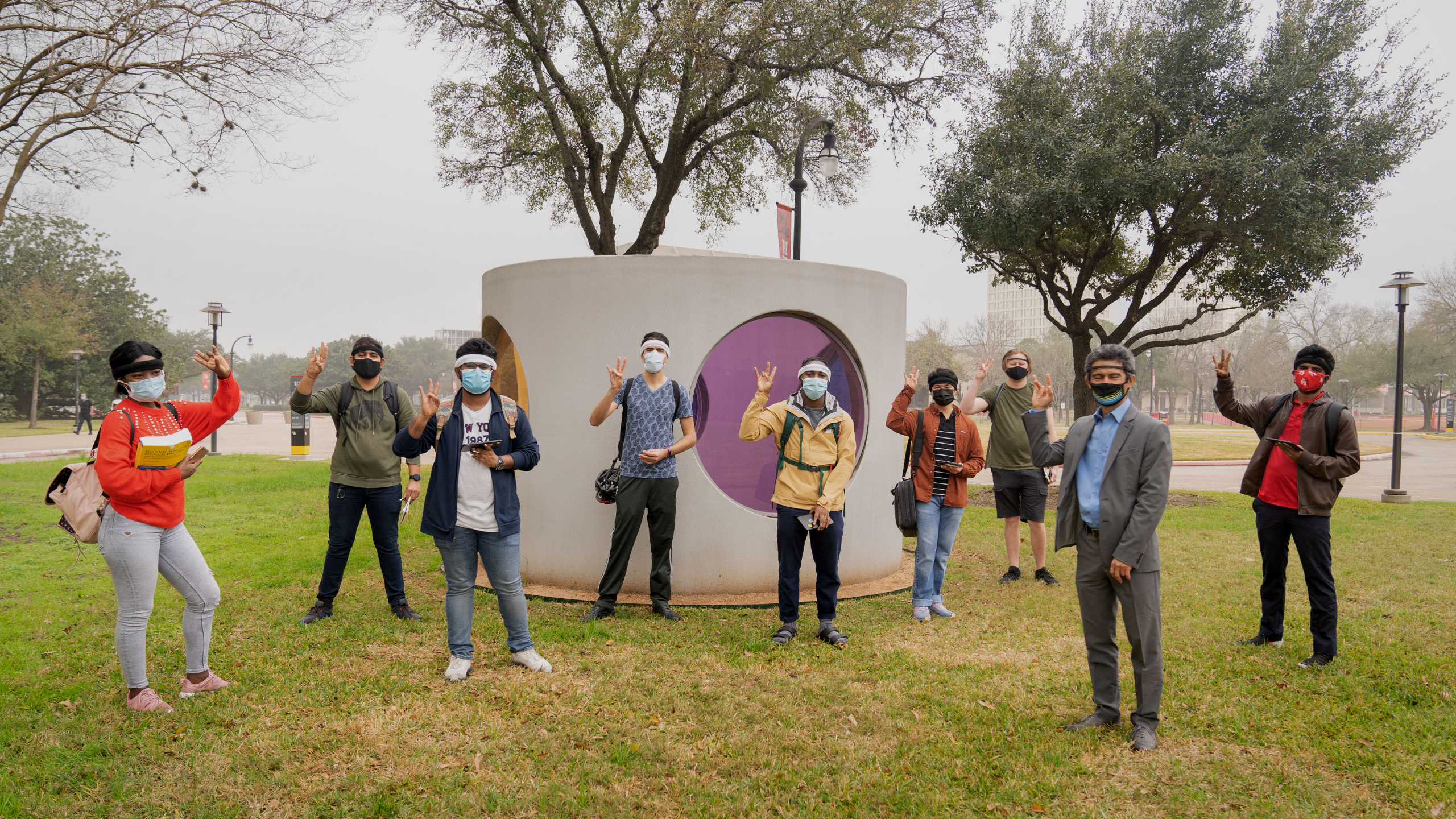MAKING WAVES IN ART AND ENGINEERING
UH Students Experience ‘Color Field’ Wearing Brain Imaging Devices
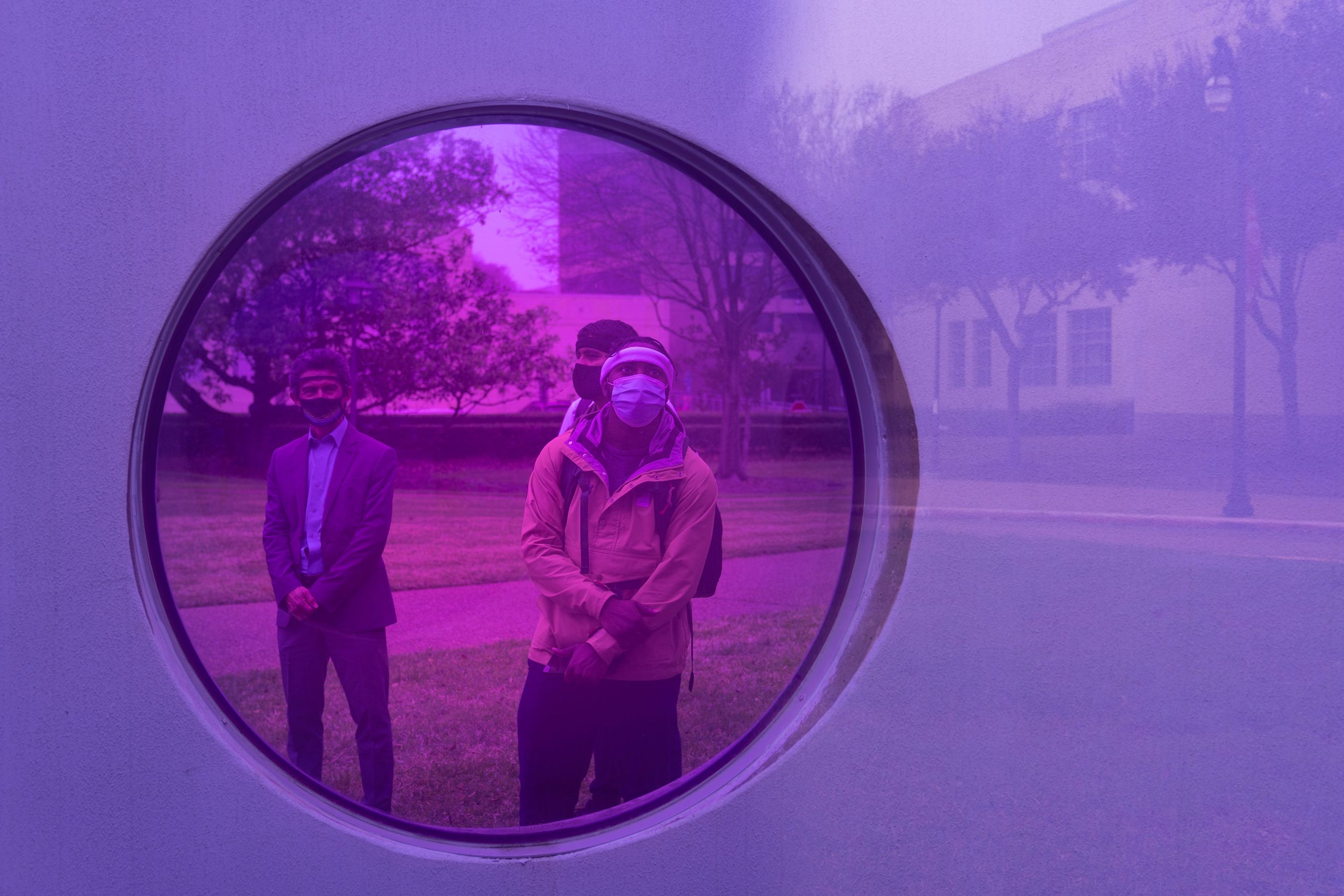
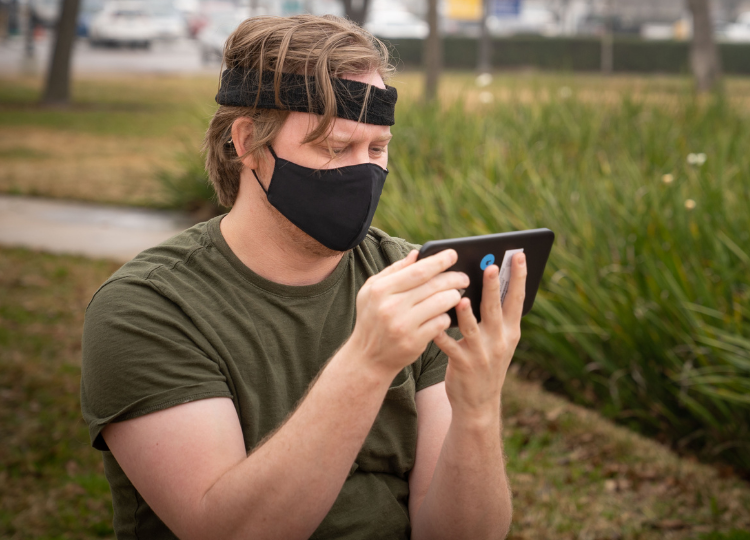
Alex Craik, a UH engineering doctoral student, reads data coming from his headband in real time as he experiences "Color Field."
Alex Craik, a UH engineering doctoral student, reads data coming from his headband in real time as he experiences "Color Field."
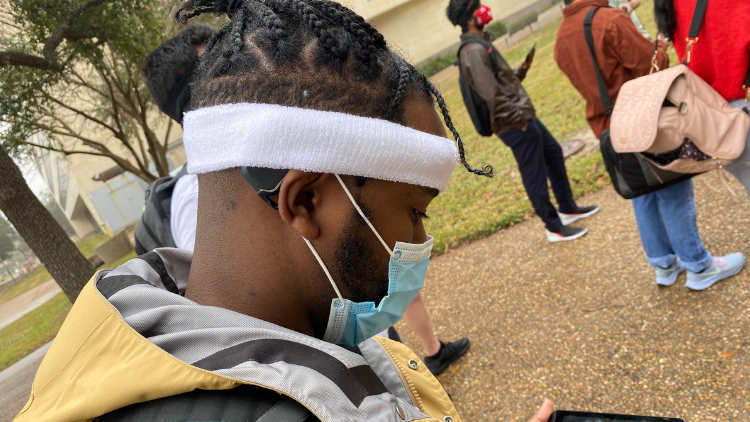
Chase Philip, UH engineering student, reads real time data from his headband on his hand-held tablet.
Chase Philip, UH engineering student, reads real time data from his headband on his hand-held tablet.
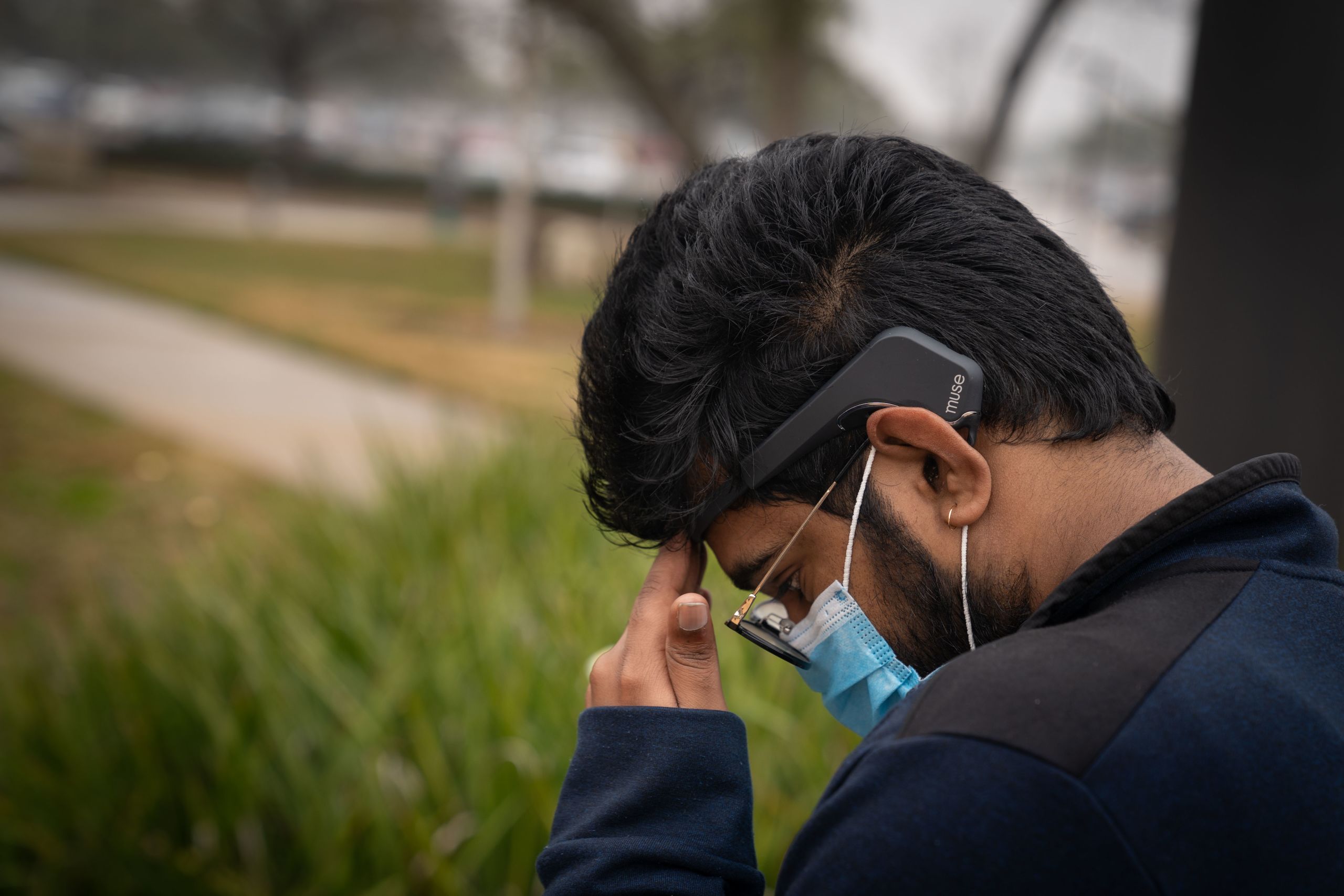
UH engineering student Himanshu Bharadwaj tests out his headset before starting the tour.
UH engineering student Himanshu Bharadwaj tests out his headset before starting the tour.
The “Color Field” public art exhibition at the University of Houston has attracted art enthusiasts from all over since it launched last fall, but engineering doctoral student Alex Craik took a more scientific interest in the bright, large-scale sculptures. Wearing a brain imaging device that tracks eye blinks, head movements and footsteps – feeding the data in real-time to handheld tablets – he was there to investigate how his brain responds to art.
“I like space in art. So, I really enjoyed TYPOE’s ‘Forms from Life’ because of its open nature which allowed us to explore the pieces from different vantage points."
Craik was among nine students from professor Jose Luis Contreras-Vidal’s neurohumanities class this spring to take a high-tech tour through the exhibition’s mile-long path across campus. Studies have shown that humans react both physiologically and psychologically to color, stimulating various emotions and hormonal activity. The experiment with Public Art of the University of Houston System – merging the visual arts and brain science – makes perfect sense.
“We wanted to do this in a real setting and ‘Color Field’ offered us the perfect opportunity,” said Contreras-Vidal, Hugh Roy and Lillie Cranz Cullen Distinguished Professor in the UH Department of Electrical and Computer Engineering. “This exercise is all about communicating with other disciplines and exploring technology in new ways as well as identifying opportunities to develop new technology that doesn’t exist.”
Presented by Public Art UHS, “Color Field” is the first curated exhibition of outdoor sculpture presented at UH and the second project in Public Art UHS’s Temporary Public Art Program, which is generously supported by The Brown Foundation, Inc. There are 13 works from seven contemporary artists which include: TYPOE, Sam Falls, Spencer Finch, Sarah Braman, Jeffie Brewer, Odili Donald Odita and soundscape artist Amos Cochran. The exhibition is organized by Crystal Bridges Museum of American Art in Bentonville, Arkansas and will remain on campus through the end of May.
“’Color Field’ enables viewers to question their perceptions while thinking about the impact color has on our lives,” said María C. Gaztambide, Public Art UHS director and chief curator. “Our goal is for students – of all disciplines – and the greater UH community to respond to these works intuitively and experience them freely.
PRECISION ART THERAPY
As director of The BRAIN Center (Building Reliable Advances and Innovations in Neurotechnology), Contreras-Vidal is a pioneer of neural and rehabilitation engineering research focusing on non-invasive brain-machine interface systems and neuroprosthetics, the study of the brain’s response to the arts and the impact of neurotechnology in medicine, neuroscience and medical device design.
"Just imagine if medical experts could move from general art therapy to precision art therapy that’s personalized and prescribed specifically for you and me."
Akshay Sujatha Ravindran, electrical and computer engineering graduate assistant, is eager to understand how the arts can be integrated into his research at the BRAIN Center.
He’s been analyzing preliminary data from his headset, which looks at a measure of creative engagement from the brain signals. Once the “Color Field” tour ended, Ravindran told the group Sarah Braman’s piece “Here” was his favorite.
“Interestingly, looking at the brain data, I found that this piece elicited the highest value of alpha asymmetry, which is a measure of creative engagement. Also, my blink rate was significantly higher – which could suggest an increased level of dopamine activity, but more analysis needs to be done to discover what the data shows,” explained Ravindran, who one day hopes to develop technology that measures attention spans of individuals with disabilities.
For now, he and his fellow classmates will continue to interpret various frequencies from their headset data to better understand how they match to specific experiences and art exhibits.
Much like the art itself, it’s hands-on learning with endless possibilities.
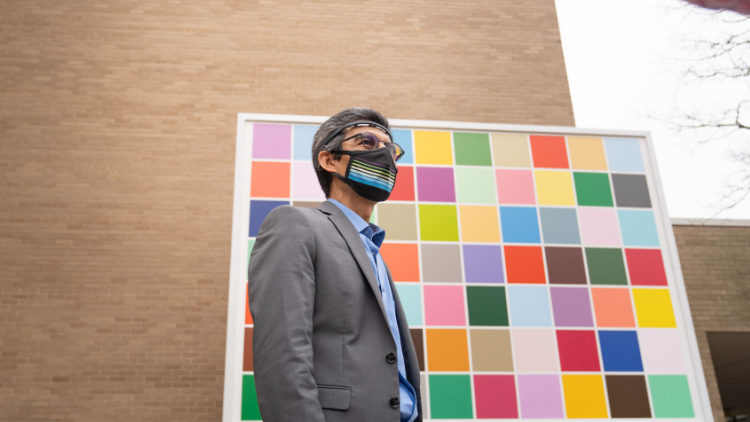
Jose Luis Contreras-Vidal, director of The BRAIN Center at UH, is a pioneer of neural and rehabilitation engineering research.
Jose Luis Contreras-Vidal, director of The BRAIN Center at UH, is a pioneer of neural and rehabilitation engineering research.
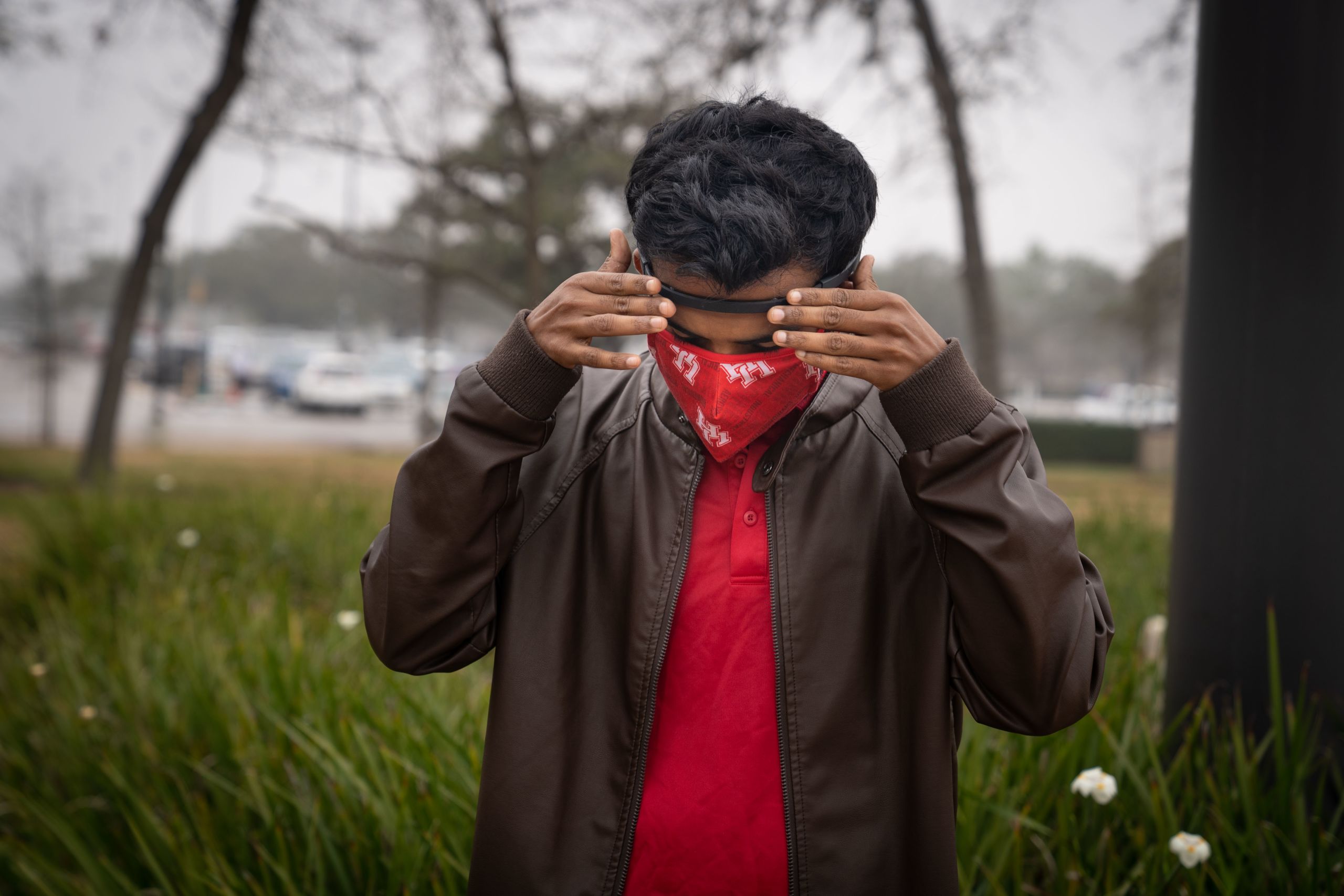
Akshay Sujatha Ravindran, UH electrical and computer engineering graduate assistant, adjusts his headband as he gets ready to take the tour.
Akshay Sujatha Ravindran, UH electrical and computer engineering graduate assistant, adjusts his headband as he gets ready to take the tour.
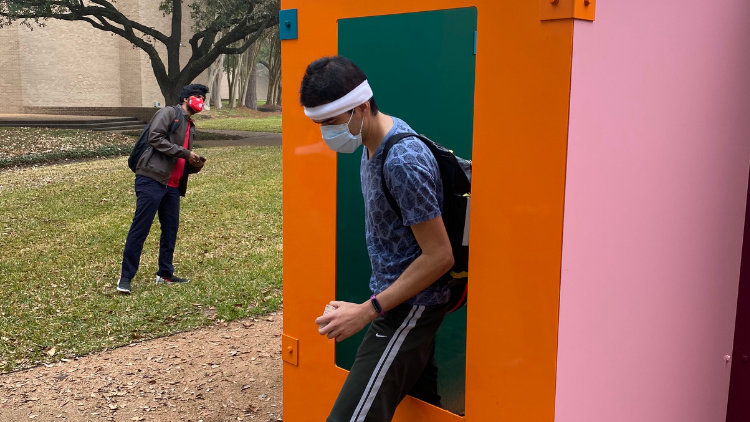
UH engineering student Rezende Fiuza Branco steps out of "Untitled (Maze)," (2014) by Sam Falls.
UH engineering student Rezende Fiuza Branco steps out of "Untitled (Maze)," (2014) by Sam Falls.
